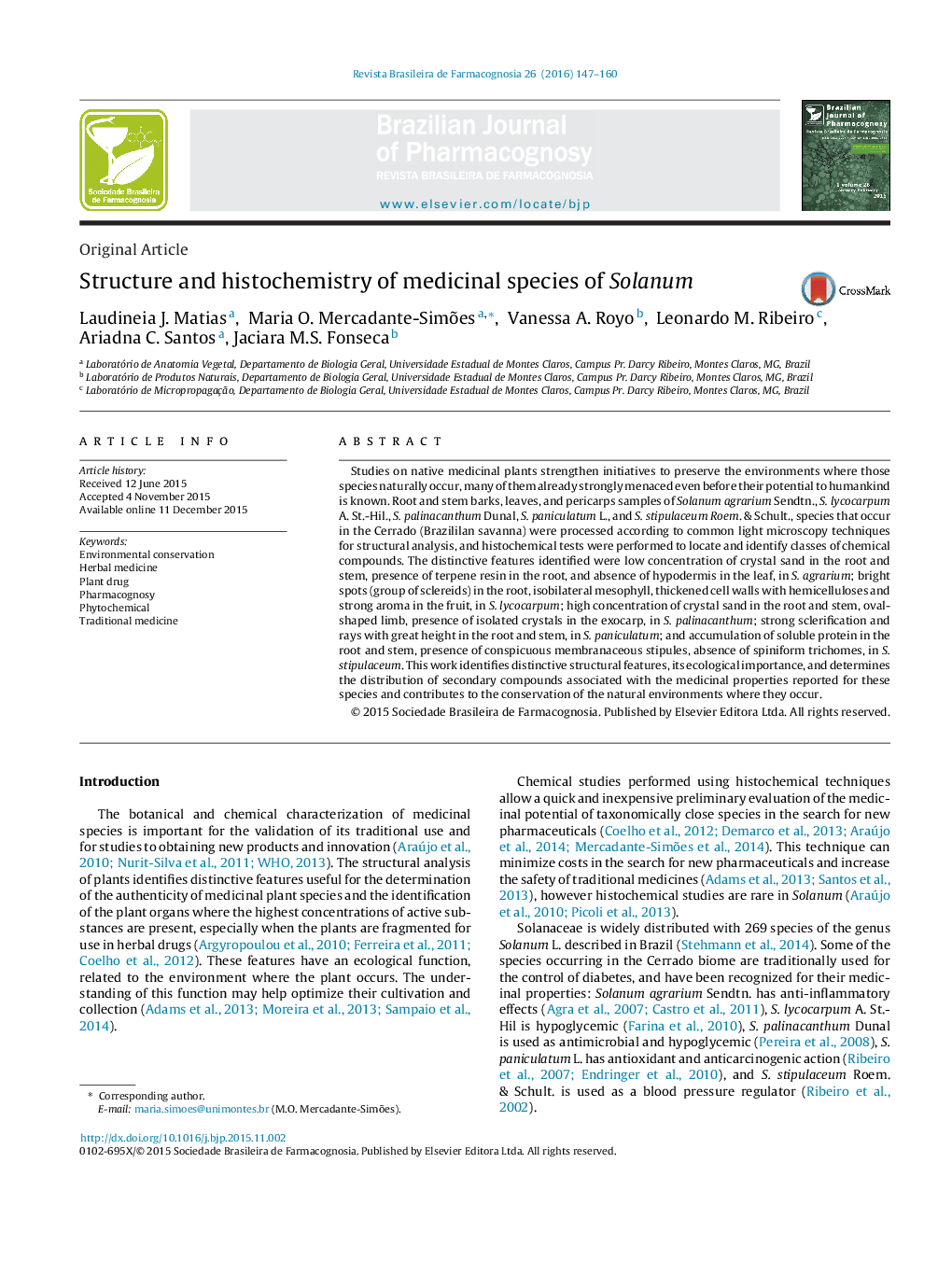| Article ID | Journal | Published Year | Pages | File Type |
|---|---|---|---|---|
| 2577573 | Revista Brasileira de Farmacognosia | 2016 | 14 Pages |
Studies on native medicinal plants strengthen initiatives to preserve the environments where those species naturally occur, many of them already strongly menaced even before their potential to humankind is known. Root and stem barks, leaves, and pericarps samples of Solanum agrarium Sendtn., S. lycocarpum A. St.-Hil., S. palinacanthum Dunal, S. paniculatum L., and S. stipulaceum Roem. & Schult., species that occur in the Cerrado (Brazililan savanna) were processed according to common light microscopy techniques for structural analysis, and histochemical tests were performed to locate and identify classes of chemical compounds. The distinctive features identified were low concentration of crystal sand in the root and stem, presence of terpene resin in the root, and absence of hypodermis in the leaf, in S. agrarium; bright spots (group of sclereids) in the root, isobilateral mesophyll, thickened cell walls with hemicelluloses and strong aroma in the fruit, in S. lycocarpum; high concentration of crystal sand in the root and stem, oval-shaped limb, presence of isolated crystals in the exocarp, in S. palinacanthum; strong sclerification and rays with great height in the root and stem, in S. paniculatum; and accumulation of soluble protein in the root and stem, presence of conspicuous membranaceous stipules, absence of spiniform trichomes, in S. stipulaceum. This work identifies distinctive structural features, its ecological importance, and determines the distribution of secondary compounds associated with the medicinal properties reported for these species and contributes to the conservation of the natural environments where they occur.
Graphical abstractStructural and histochemical features of five medicinal Solanum species.Figure optionsDownload full-size imageDownload as PowerPoint slide
